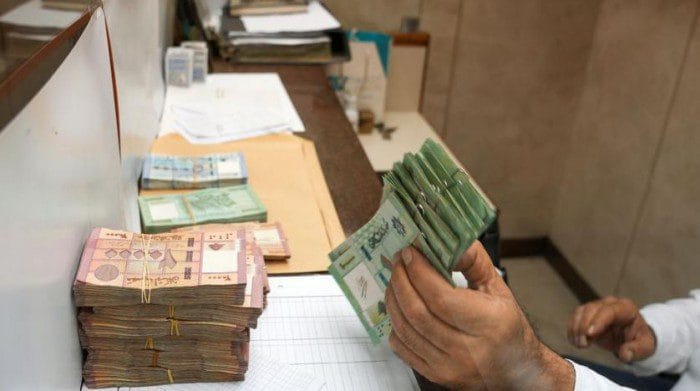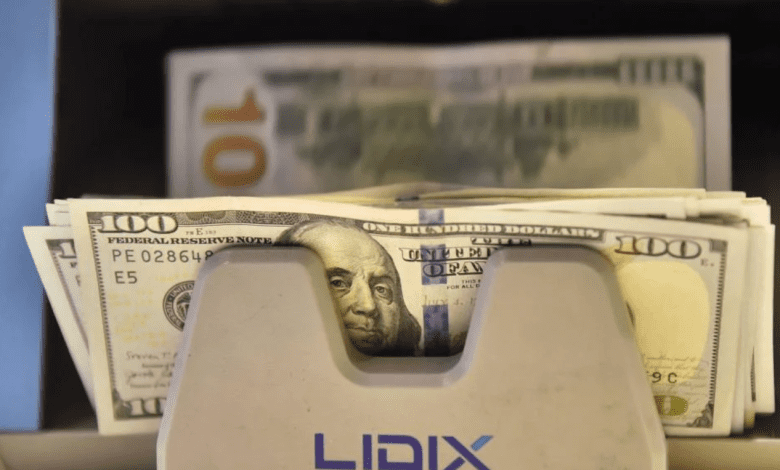طباعة فئة 500 ألف ليرة: خطوة نقدية جديدة وسط استقرار الليرة وتحديات الأزمة الاقتصادية في لبنان
في خطوة استباقية ضمن تداعيات انهيار سعر صرف الليرة اللبنانية منذ أواخر 2019، أقرّ مجلس النواب تعديلاً على قانون النقد والتسليف يسمح لمصرف لبنان بإصدار أوراق نقدية جديدة بفئات عليا، من بينها فئة 500 ألف ليرة، مع إمكانية إصدار فئة المليون ليرة في المستقبل. هذا الإجراء يأتي وسط تفاقم الأزمة الاقتصادية وارتفاع التضخم، ما أثار نقاشات حادة بين مؤيدين يرونه ضرورة تقنية، ومعارضين يخشون انعكاساته السلبية.
يُذكر أن مصرف لبنان يستعد فعليًا لطباعة فئة الـ500 ألف ليرة وطرحها تدريجيًا في السوق، دون زيادة في الكتلة النقدية المتداولة، بحيث تحل هذه الفئة محل كميات كبيرة من الأوراق النقدية الصغيرة التي فقدت كثيرًا من قيمتها الشرائية. وتهدف الخطوة لتسهيل التداول النقدي اليومي داخل المؤسسات وبين الأفراد.
رغم تأكيد الجهات الرسمية أن الطباعة الجديدة لن تؤثر على السياسة النقدية أو التضخم، يرى كثير من المراقبين أنها اعتراف ضمني بفقدان الليرة لجزء كبير من قيمتها، إذ إن إصدار فئات نقدية كبيرة غالبًا ما يصاحب انهيارات نقدية أو عجزًا متراكما في السيطرة على السيولة والأسعار.
وفي حديث لـ”نداء الوطن”، بيّن نائب حاكم مصرف لبنان السابق غسان عيّاش أن إصدار الفئات النقدية الجديدة جاء استجابة لحاجات التداول وسط تضخم مستمر في الكتلة النقدية، مشيرًا إلى أن هذه الفئات لم تكن سبب التضخم، بل نتيجة له، وأن حجم الكتلة النقدية يتضمن النقد المتداول، الحسابات الجارية، الحسابات لأجل، والودائع بالعملات الأجنبية، مما يعزز الحاجة لفئات أكبر مع تزايد حجم هذه الكتلة.
أكد عيّاش أن إصدار الأوراق النقدية الجديدة يشكل جزءًا بسيطًا من الكتلة النقدية الإجمالية، وأن الطلب عليها نما بسبب اتساع الكتلة المالية نتيجة الدين العام والتضخم وارتفاع الأسعار. ورأى أن معالجة الأزمة لا تكون بإيقاف إصدار الفئات الكبيرة، بل بالإصلاح المالي والسيطرة على العجز وتحقيق استقرار الأسعار.
وتشير المعطيات إلى أن فئة المليون ليرة مطروحة ضمن خطط مصرف لبنان في حال استمرار الأزمة المالية، فيما يرى عيّاش أن الحديث عن هذه الفئة جاء كرد فعل ظرفي دون تخطيط نقدي متكامل.
القرار بحد ذاته يسهل على المواطنين التعاملات النقدية ويخفف الأعباء الناجمة عن حمل أعداد ضخمة من الأوراق، لكنه يحمل أثرًا نفسيًا سلبيًا يعزز اتجاهات الدولرة والادخار بالذهب والعملات الأجنبية. ويشير عيّاش إلى أن الحاجة لفئات أكبر ستظل قائمة حتى انتهاء الأزمة.
يأتي هذا وسط غياب خطة إصلاح نقدي شاملة، مما يضعف فعالية هذه الإجراءات ويجعلها حلولًا ظرفية مؤقتة. ويؤكد عيّاش أن جذور الأزمة المالية تعود إلى ثمانينات القرن الماضي، مع انتقادات حادة للمعالجات الشكلية والتلاعب بالأرقام المالية التي تؤخر الحلول الجذرية.
في ظل هذه المعطيات، تبدو طباعة الفئات النقدية الجديدة خطوة تعكس استقرارًا شكليًا فقط، دون معالجة حقيقية لجذور الأزمة، ما قد ينعكس سلبًا على الثقة بالليرة اللبنانية في المستقبل القريب.
Lebanese Central Bank to Print 500,000 Lira Notes Amid Currency Stability and Economic Crisis Challenges
In a preemptive move related to the ongoing depreciation of the Lebanese lira since late 2019, the Lebanese Parliament approved an amendment to the Money and Credit Law allowing the Central Bank of Lebanon to issue high-denomination banknotes, notably the 500,000 lira note, with the potential introduction of a one million lira note in the future. This measure comes amid escalating economic crisis and rising inflation, sparking heated debates between supporters who see it as a technical necessity and opponents concerned about its psychological and economic repercussions.
The Central Bank is reportedly preparing to print the 500,000 lira note to be gradually introduced into the market without increasing the overall money supply. The new notes aim to replace large quantities of small-denomination bills that have lost significant purchasing power, thus facilitating daily transactions for both institutions and individuals.
While official sources reassure that this step will not affect monetary policy or inflation rates, many observers view it as an implicit acknowledgment of the lira’s substantial loss of real value. Typically, issuing larger denominations is associated with monetary systems undergoing deep collapses or persistent challenges in controlling liquidity and prices.
Former Deputy Governor of the Central Bank, Ghassan Ayash, explained to “Nidaa Al-Watan” that the issuance of new large-denomination notes responds to transaction needs amid continuous inflation of the monetary base. He emphasized that these new notes were not the cause of inflation but rather a consequence of it. The monetary base includes circulating cash, current accounts, term deposits, and foreign currency accounts, meaning the demand for larger denominations grows as the monetary base expands.
Ayash stressed that the new banknotes constitute only a small fraction of the total monetary base, with demand growing due to the increasing size of the base, driven by public debt, inflation, and rising prices. He argued that resolving the crisis requires fiscal reforms, budget deficit control, and price stabilization, not halting the issuance of large denominations.
Data suggests that the one million lira note is on the Central Bank’s agenda if financial conditions persist. However, Ayash views discussions about this denomination as a reactive, unplanned measure rather than part of a sound monetary policy.
The decision provides practical relief by easing cash handling burdens for citizens, but it also has a negative psychological impact, reinforcing tendencies toward dollarization and saving in gold or foreign currencies. Ayash noted that the demand for larger denominations will persist until the crisis ends.
This move comes amid the absence of a comprehensive monetary reform plan, weakening the effectiveness of such measures and rendering them temporary fixes. Ayash highlighted that the roots of Lebanon’s financial crisis date back to the 1980s, criticizing superficial measures and accounting manipulations that delay fundamental solutions.
Under these circumstances, printing new high-denomination notes appears as a superficial sign of stability without addressing the core crisis, potentially undermining confidence in the Lebanese lira in the near future.
Translated by economyscopes team
المصدر: جوزيان الحاج موسى – نداء الوطن
 سكوبات عالمية إقتصادية – EconomyScopes إجعل موقعنا خيارك ومصدرك الأنسب للأخبار الإقتصادية المحلية والعربية والعالمية على أنواعها بالإضافة الى نشر مجموعة لا بأس بها من فرص العمل في لبنان والشرق الأوسط والعالم
سكوبات عالمية إقتصادية – EconomyScopes إجعل موقعنا خيارك ومصدرك الأنسب للأخبار الإقتصادية المحلية والعربية والعالمية على أنواعها بالإضافة الى نشر مجموعة لا بأس بها من فرص العمل في لبنان والشرق الأوسط والعالم




